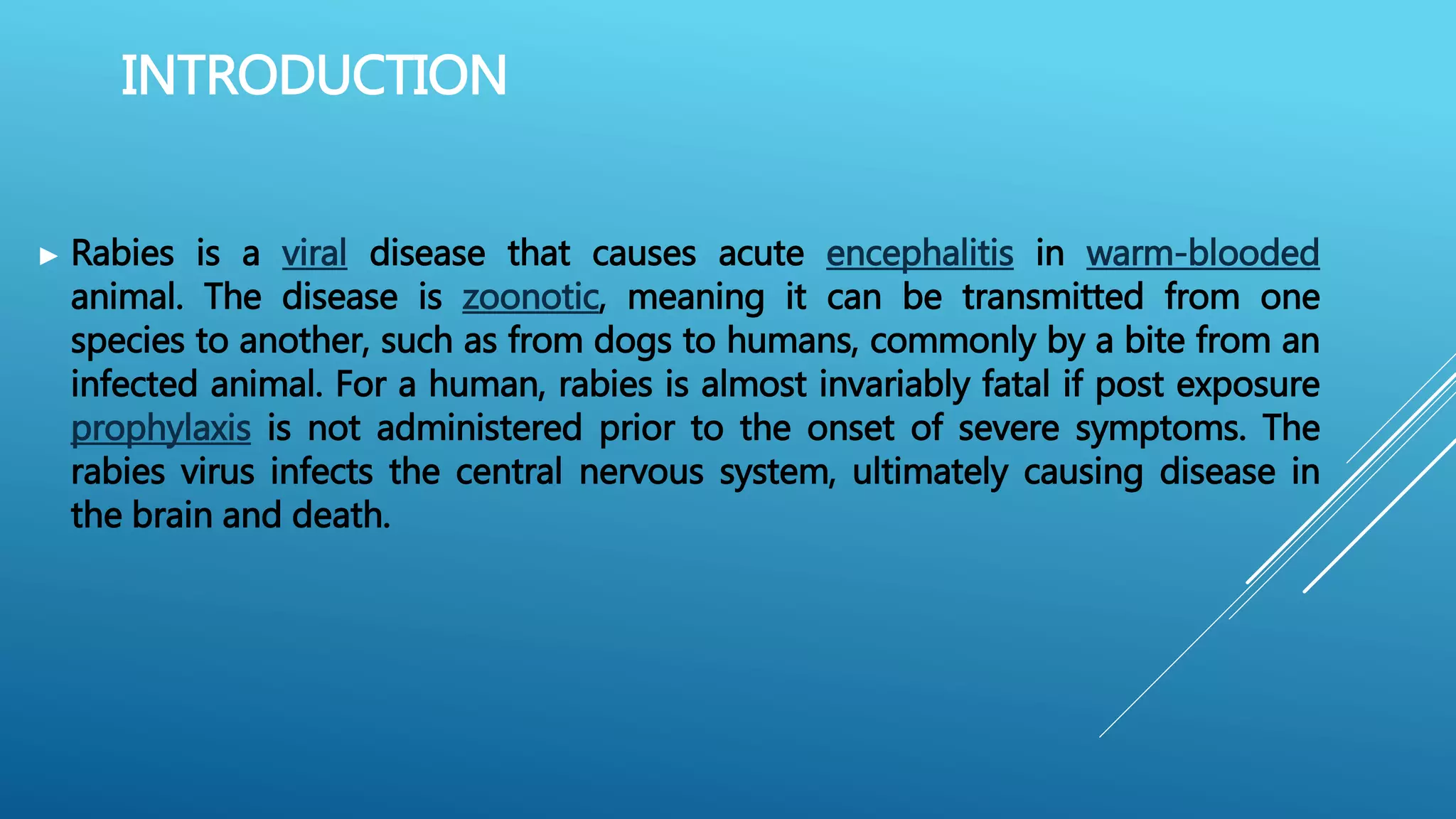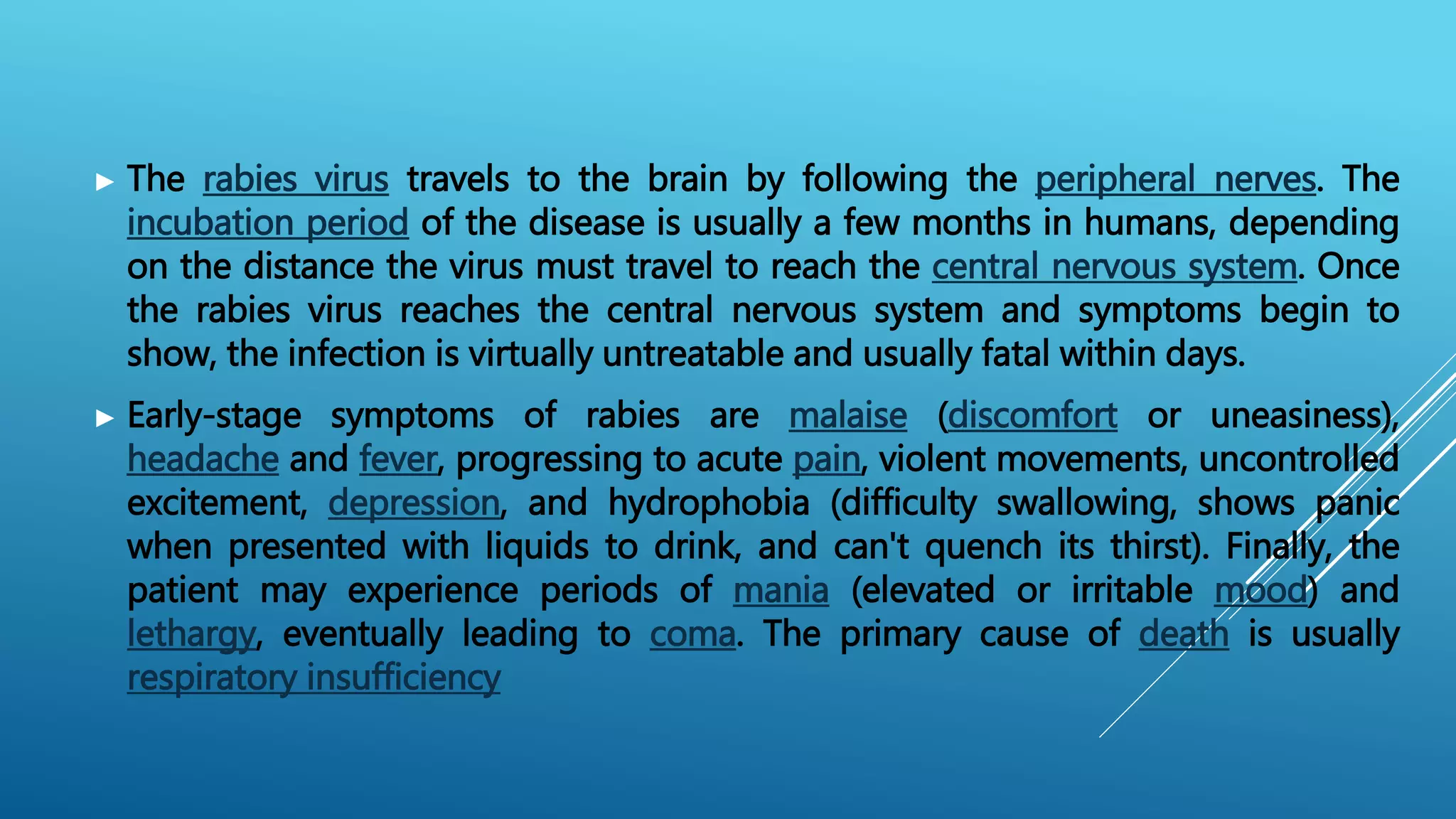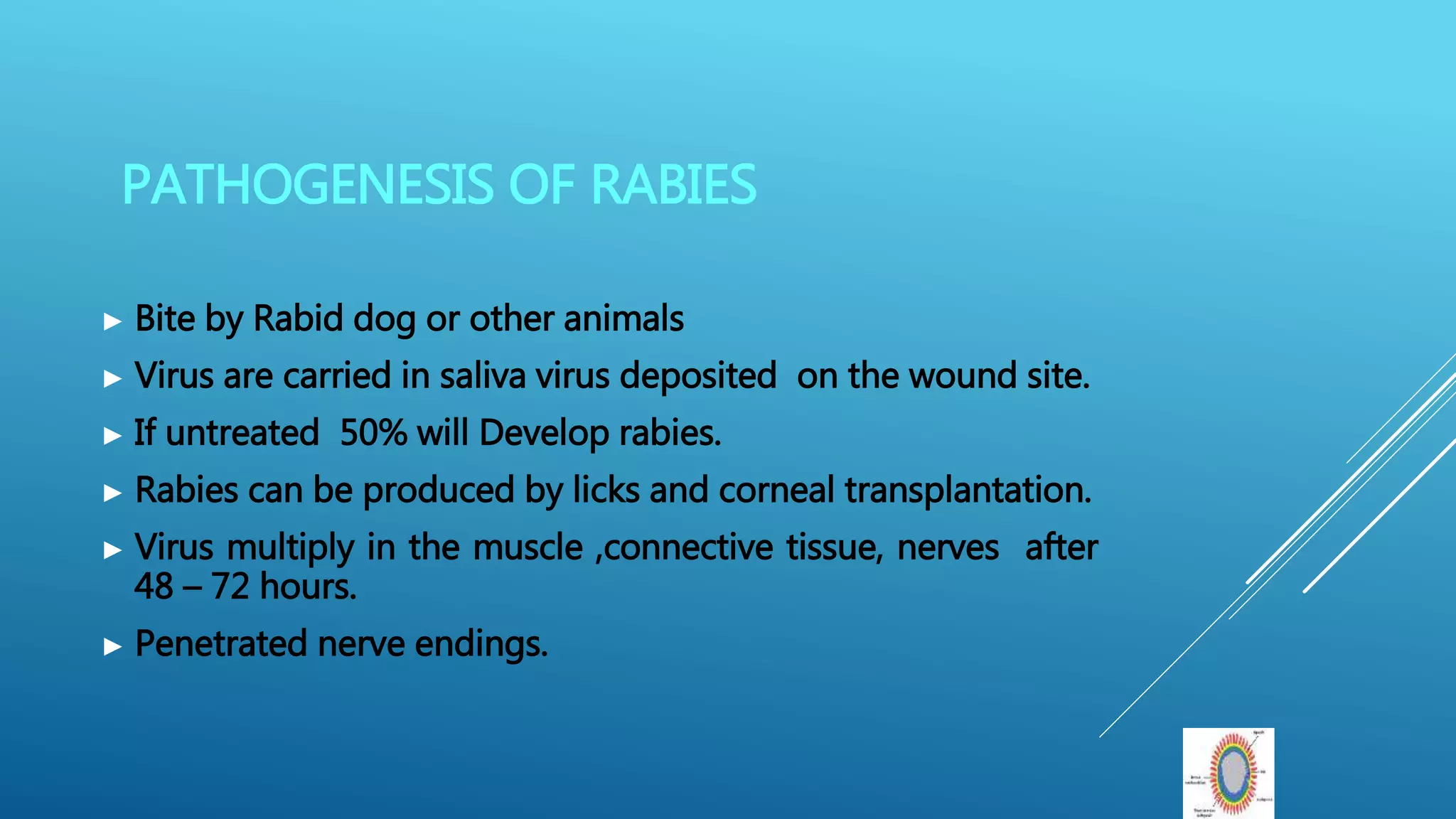1. Rabies is a fatal viral disease transmitted through bites from infected animals that causes acute inflammation of the brain.
2. The rabies virus travels through the nervous system to the brain. Early symptoms are flulike but the disease progresses to neurological symptoms and ultimately death.
3. Post-exposure prophylaxis, including wound cleaning and a vaccine series, must begin before symptoms occur to prevent death from rabies. Pre-exposure vaccination is recommended for those at high risk of exposure.


































